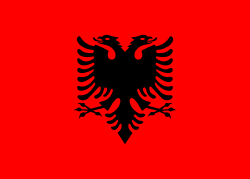
Albanophilia is a non-Albanian person's expression of a strong interest in or appreciation for the Albanian language, Albanian culture, Albanian literature, Albanian history or the Albanian people.

Albanophilia is a non-Albanian person's expression of a strong interest in or appreciation for the Albanian language, Albanian culture, Albanian literature, Albanian history or the Albanian people.

Johann Erich Thunmann in the 18th century supported the theory of the autochthony of the Albanians [1] and also presented the Illyrian origin theory. [2] [3] Later on Gustav Meyer proved that Albanian language was part of the Indo-European family. [4]
In 2001 during the Insurgency in Macedonia the German foreign minister Joschka Fischer declared, that the Albanian question in the Balkans is not solved. Around 1912 Germany and Austria supported an Independent Albania, including cities like Parga, Tetovo and Pristina. [5]

The Montenegrin Federalist Party was the only party in Montenegro which promoted common Illyrian theory with Albanians. The party's theoretician, Sekula Drljević, promoted ideas of a separate Montenegrin ethnicity (ideas that become more extreme throughout the 1930s), arguing that the Montenegrins were Illyrian. [6] He wrote:
Races are communities of blood, whereas people are creatures of history. With their language, the Montenegrin people belong to the Slavic linguistic community. By their blood, however, they belong [to the Dinaric peoples]. According to the contemporary science of European races, [Dinaric] peoples are descended from the Illyrians. Hence, not just the kinship, but the identity of certain cultural forms among the Dinaric peoples, all the way from Albanians to South Tyroleans, who are Germanized Illyrians. [7]
Johann Erich Thunmann (1746–1778) of the University of Halle first disseminated the theory of the autochthony of the Albanians
Although the first major exposition of the Illyrian theory, published by the German scholar Johann Thunmann in 1774...
The first one who clearly formulated the thesis of the Illyrian origin of the Albanians, was the German historian Johannes Thunmann in the eighteenth century.
In fact, Albanian was not established definitively Indo-European until the latter part of the nineteenth century, when certain structural and lexical correspondences that demonstrated the Indo-European character of the language were noted (especially by Gustav Meyer)
Edith Durham, the noted Albanophile, comes here to mind.